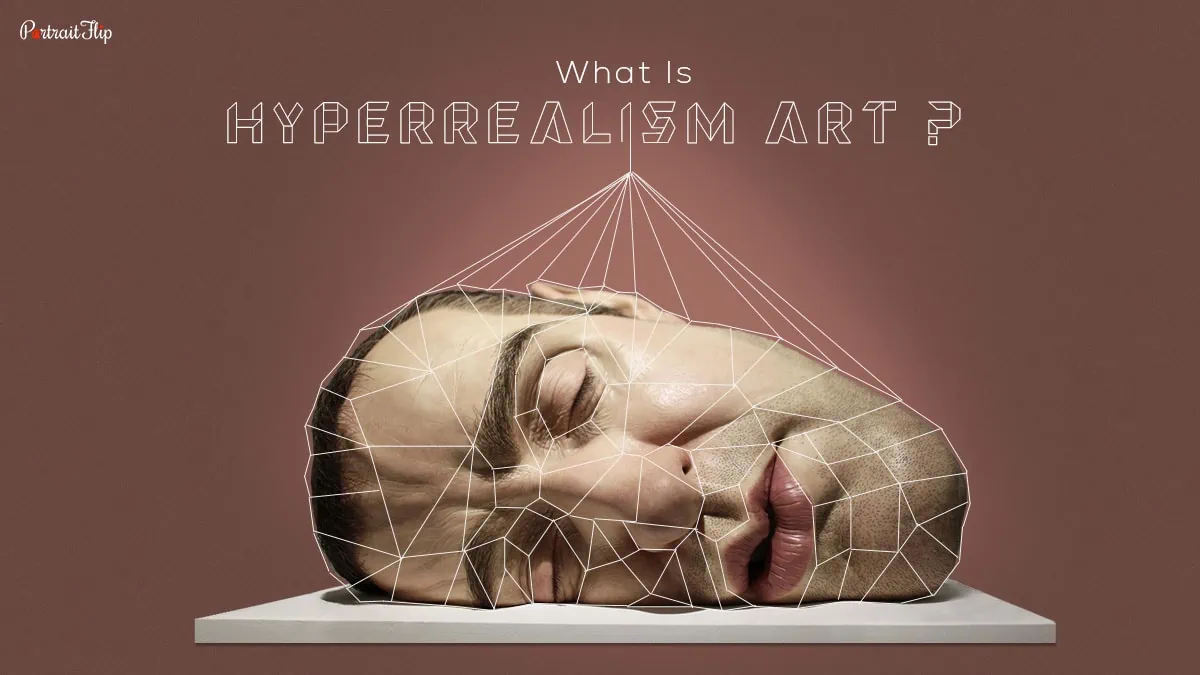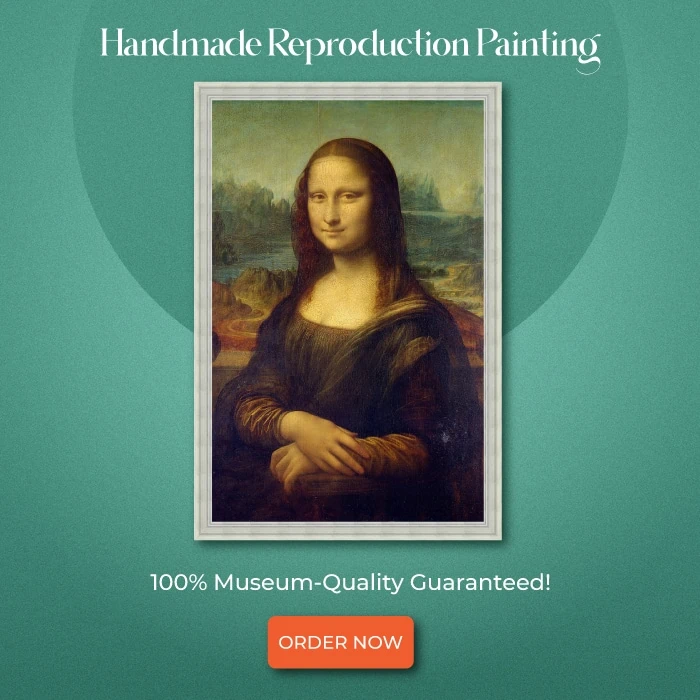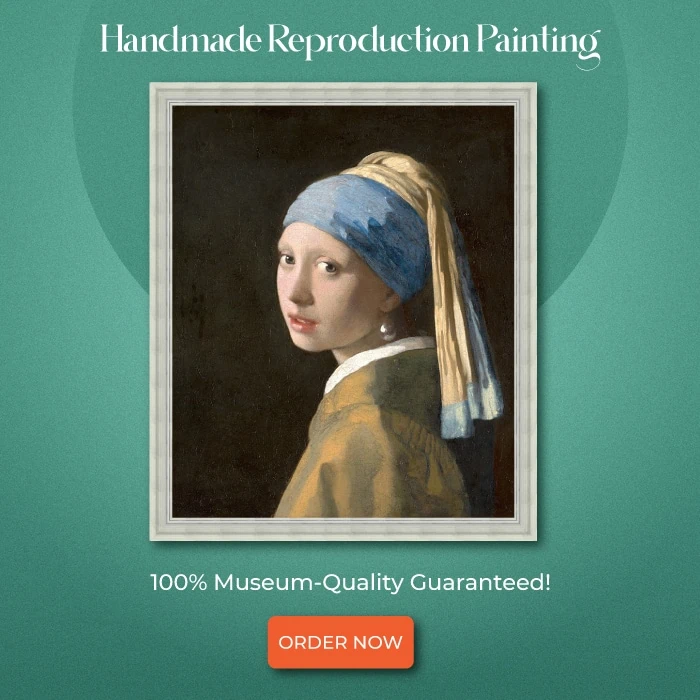Hyperrealist images!
Something that is so real that it makes you wonder how can an artist pull it off?
Is it really hand-painted or a photograph?
The images will make you feel intrigued, whether the part you’re witnessing is original or just a playful act of your subconscious mind.
It aims to erase the wall that lies between art and reality.
There are n-number of famous paintings that show hyperrealism, which can leave you speechless.
Are you ready to enter the hyperrealism art world?
I can bet it will make you question whether it is real or just superficial!
Table of contents
What is Hyperrealism Art?
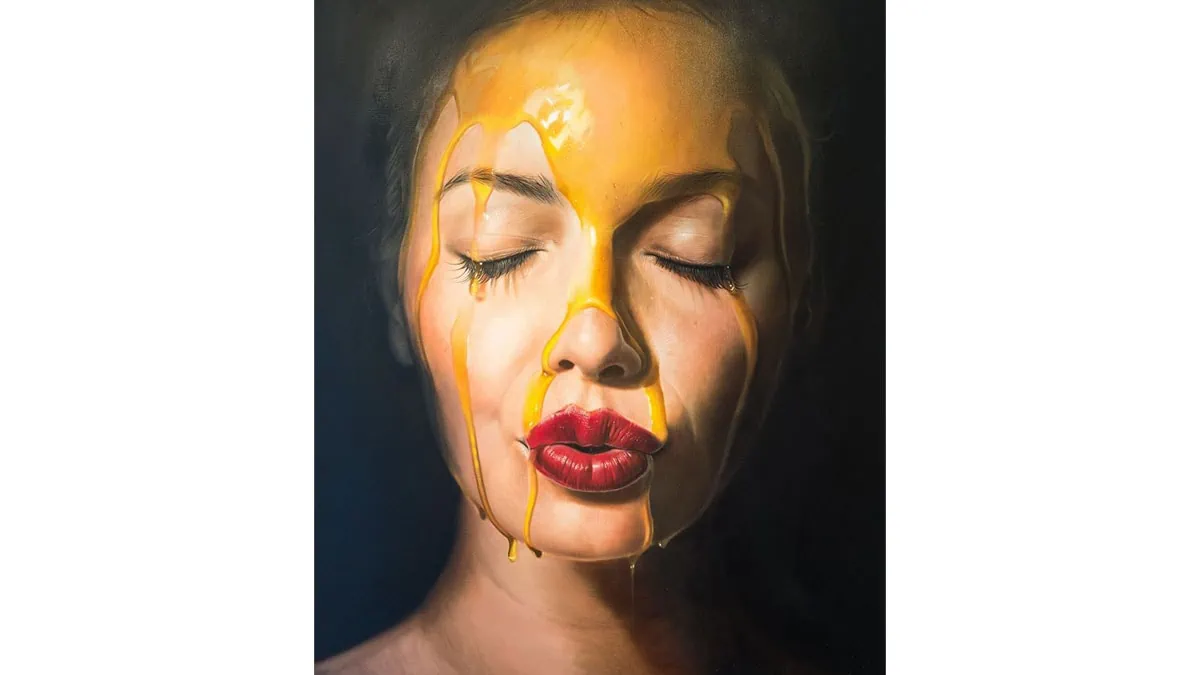
What does hyper-realistic mean?
Whenever you witness art in front of you, there is a sudden sense of feeling about why, how, and what the artist has painted.
Hyperrealism is a form of art where the artwork looks unbelievably lifelike and is often mistaken for a real thing.
You can easily get confused between a super-realistic drawing and an actual photograph.
A question: Why did artists recreate such art that can be captured as a photograph?
Let me tell you why.
Famous painters like Chuck Close, Audrey Flack, Richard Estes, and Denis Peterson created such art to achieve a hyper-realistic appearance.
The motive was to produce art that could easily be misinterpreted as a photograph.
They wanted to reach a point of realism in art.
In simple words, hyperrealism art is a painting that looks just like a real image that we capture in photographs.
But every form of art has a beginning.
Some hyperrealist artists or hyperrealism paintings share the history of this amazing art movement.
Hypperealism Movement: The Beginning
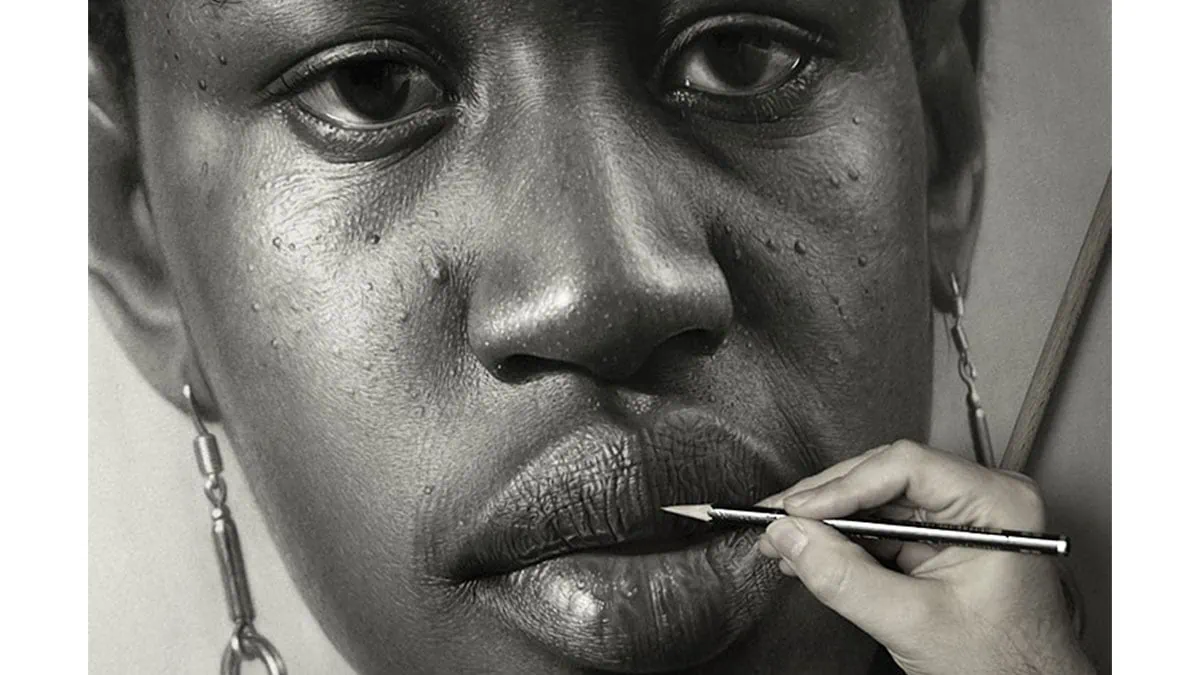
Would you like to hear the shortest history of an art movement?
In the 1970s, a few European artists found their ways to amplify subjects of still life and photographed scenes in their own way, which is when hyperrealism art was born.
The end!
This small part took a huge turn in order to begin an art movement like hyperrealism.
When we talk about photorealism, it is said to be born from the mixture of pop art and minimalistic art.
While photorealism was gaining popularity as a career, hyper-realistic art was uncertain.
Why?
This was because people who used hyperrealism to portray their thoughts feared that their work could be labeled as an imitation.
But as the saying goes, “reality doesn’t go away even if you stop believing in it.”
In the same way, although photorealism was in culture, the world was meant to focus on abstract arts that could not have been found in the real world.
Therefore, in the early 21st century, hyperrealism art became incredibly popular.
It focused on creating powerful images by adding different elements to enhance the piece.
Hyper-realistic painters started to produce varieties of subject matter that included landscapes, still life paintings, figurative arts, portraits, cityscapes, and more.
Aren’t you curious to know about those hyper-realistic artists?
Notable Hyperrealist Artists (Modern and Past Era)
All art movements belong to specific artists, who can be the faces of that particular art.
With their skillful hands, they created artwork that blew people’s minds.
Below is the list, divided according to modern and past periods.
Modern Period

Starting with the modern era artists of hyperrealism.
Let’s have a look at the five most talented painters who introduced new modern art in the world.
a) William Forrest
Imagine you’re being forced to record your work because people misunderstand it for something else.
This was the case with William Forrest.
He used to record his hyperrealism works so that people would believe that they were hand-painted and not just captured in photographs.
He was known for creating “natural” pieces.
b) Juan Francisco Casas
Some are born artists who create magic by adding colors and shapes that form rhythm in art.
But very few have the capability to reproduce art just by using a ballpoint pen.
Don’t believe me?
Look at this hyperrealistic art.
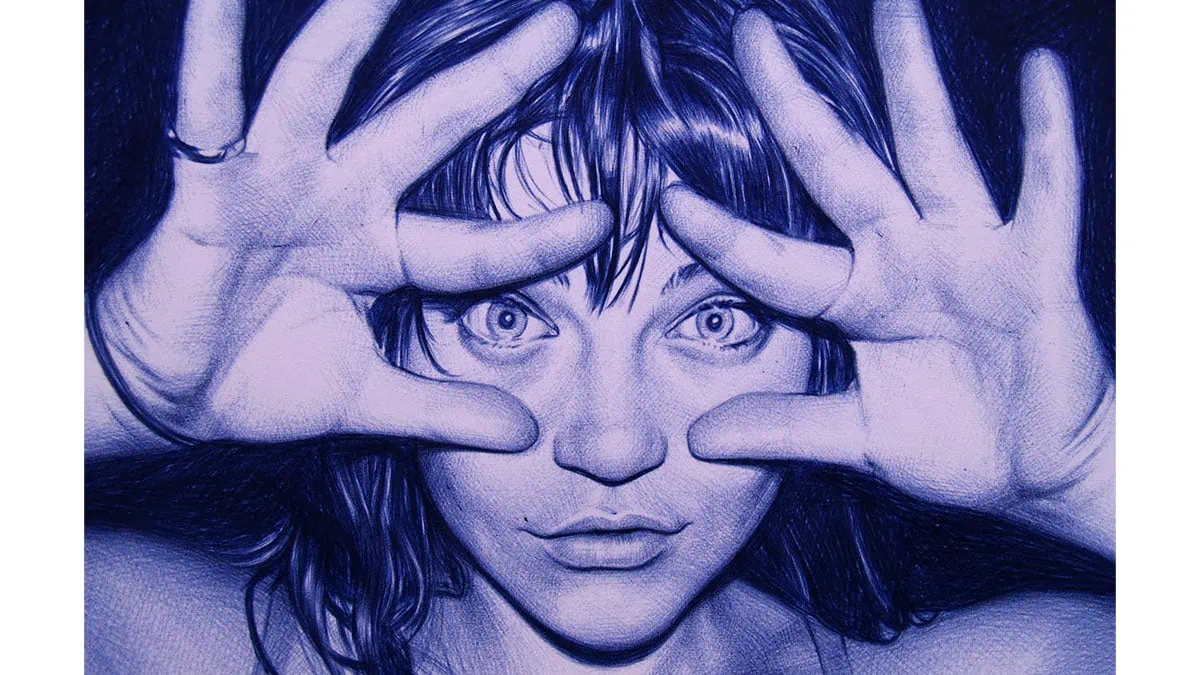
Now you accept that a pen can do magic.
This is the work of Juan Francisco Casas, who is famous for his hyper-realism drawings that make the viewers feel that someone has applied an ink filter to the photograph.
What a masterpiece!
c) Carole Feuerman
The hardest part of art is creating a sculpture.
An artist needs to be careful in many ways, especially while carving a human structure.
Carole Feuerman not only specializes in creating a sculpture that appears to be wet but also uses resin, which is a harder material than silicone.
Didn’t get me?
Witness her work with your own eyes.

This sculpture thoroughly explains the points stated above!
She has a great understanding of human anatomy and produces art that is incredibly challenging.
This shows her hyperrealism skills.
d) Evan Penny
Want to see super-realistic art?
Here is another hyperrealist sculptor who creates his art through silicone.
His creations will appear like models.

I mean, look at this self-portrait. Isn’t this incredible?
You only need one correct point of view to admire Evan’s sculptures.
e) Ron Mueck
Have you seen real humans?
Of course you have. What a silly question.
But have you ever come across Ron Mueck’s humans?
His artwork looks exactly like real people.

Every inch and every proportion in art is measured in a perfect manner.
Amazing work!
Past Period

Without acknowledging the past, we cannot look into the present.
Let’s have a look at the five most talented painters who built a path for the next generation.
a) Roberto Bernardi
Roberto Bernardi was a man with the ability to make his audience look through their own eyes.
He could make the art live, unlike others who could only get inspired by ordinary scenes.
Roberto used to bring out beauty in the most mundane scenes, like washing dishes.

The above artwork that captivates you is one of the brilliant works by Roberto.
Beautiful, right?
b) Ralph Goings
Ralph Goings was one of the first artists to promote the photorealism movement.
He was known for his detailed paintings of fast food and vehicles.
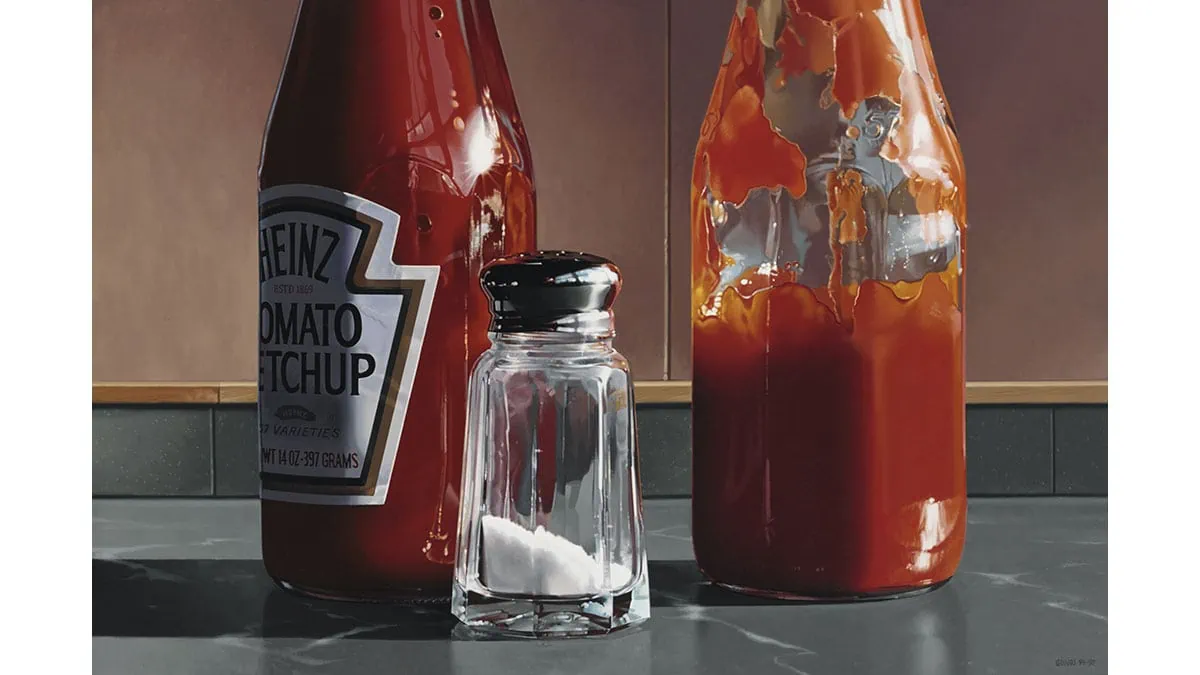
Can you believe that this is a painting by a human?
I have never seen a ketchup bottle described in such a detailed manner.
Ralph’s thoughts were different, as he was inspired to create works that were the complete opposite of abstract ideas.
c) Thomas Eakins
Thomas is one of the major noteworthy artists leading up to the hyperrealism art movement.
This is due to his contribution to the realism art movement and his ability to bring it to a commercial level.
Look at his “Portrait of Dr. Samuel D. Gross (The Gross Clinic).”

The level he set in his paintings describing hyperrealism is incredible.
d) Audrey Flack
Audrey Flack is the first artist to use photographs as a reference.
She is well-known for her paintings, sculptures, and photography, which play a part in the photorealism movement.

You can witness her works at the Museum of Modern Arts, the Metropolitan Museum of Art, and more.
e) Chuck Close
It will be unfair if we do not mention Chuck Close while talking about hyperrealism.
Chuck is one of the pioneers of hyper-realistic art.
He is a visual artist, photographer, and painter who is known for depicting his subjects in the most massive format.
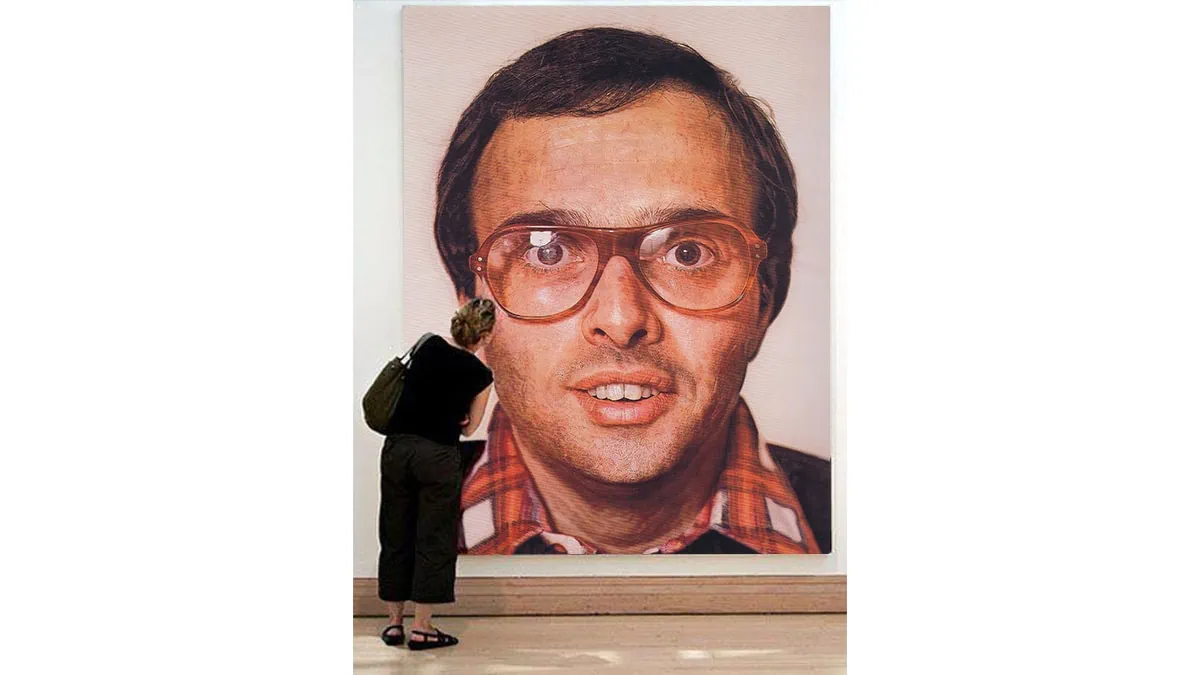
Have a close look at this enormous work, “Mark” by Chuck Close.
The detailing, each brush stroke, and the accuracy of balance in art are seen right through this masterpiece.
What great photorealism art!
When I say photorealism, that doesn’t mean that it is something different from hyperrealism.
Don’t get confused.
People mostly have a dilemma between hyperrealism and photorealism.
I thought, why not make that concept clear for my readers?
Difference: Hyperrealism vs Photorealism

People mostly get confused between hyperrealism and photorealism.
The similarity that connects both arts is there introduction, which took place during the mid-20th century.
Let me describe their meaning, which will help you understand the exact difference.
Photorealism: Introduced before hyperrealism, this art was a replication of photographs in the most detailed version that could not be spotted with the naked eye.
Hyperrealism: This art came into existence because of photorealism, with the same idea of replicating photographs that included narrative, thoughts, or symbolism.
Photorealism was a response to photographs that were depicted only through paintings.
Whereas hyperreal art was resembled through sculpture, paintings, or printmaking.
Photorealism was just a duplication of photographs but it was not the same case with hyperrealism.
Artists develop hyper-realistic paintings that have meaning, a story to share, or unleash emotions.
Art which is not just a copy.
Now you know why photorealism and hyperrealism are not the same.
How can we leave without witnessing some popular hyperrealism artwork?
Most Popular Hyperrealism Arts
Every art genre has some masterpieces that stand out in the crowd.
Some pieces inspire us, some captivate us, some evoke emotions, or sometimes, they make us feel nothing at all.
Make way for the most admired hyperrealism paintings ever made!
1. Spooning Couple by Ron Mueck (2005)

As weird as it looks, Ron Mueck depicts a man and a woman lying together in a spooning position.
Both figures are light tone and barely clothed.
The only aspect that can make it unrealistic is its scale.
The sculpture is half the size of the average person.
Mueck’s carved the sculpture in an erotic sense, in a way where two human beings are about to make love and are in a cuddling position.
2. Girl by Lisa Milroy (1998)
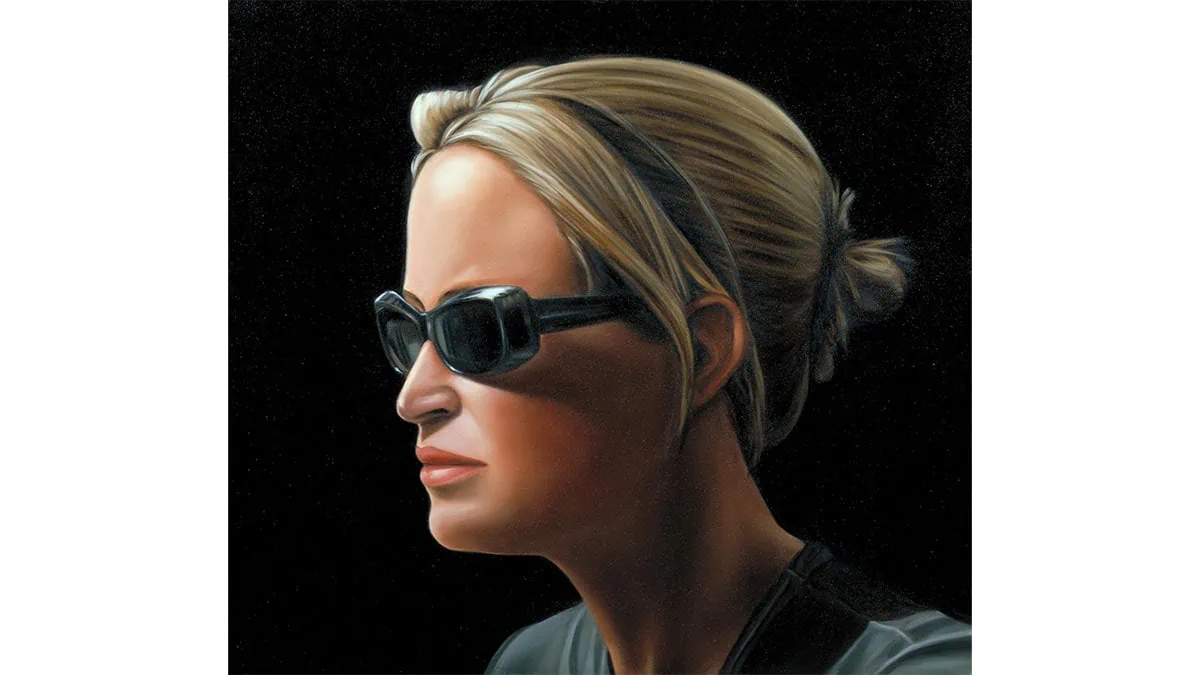
A 1998 landscape painting by Lisa Milroy portrays a woman’s left profile against a black background.
The highlight of this hyperrealism art is the woman’s face.
If you take a close look at it, you’ll notice that the neck is reaching into the shadows, making the face prominent in the whole subject.
The painting is created on a very smooth surface that leaves a realistic format.
3. Tweety and Bunny by Roberto Bernardi (2017)
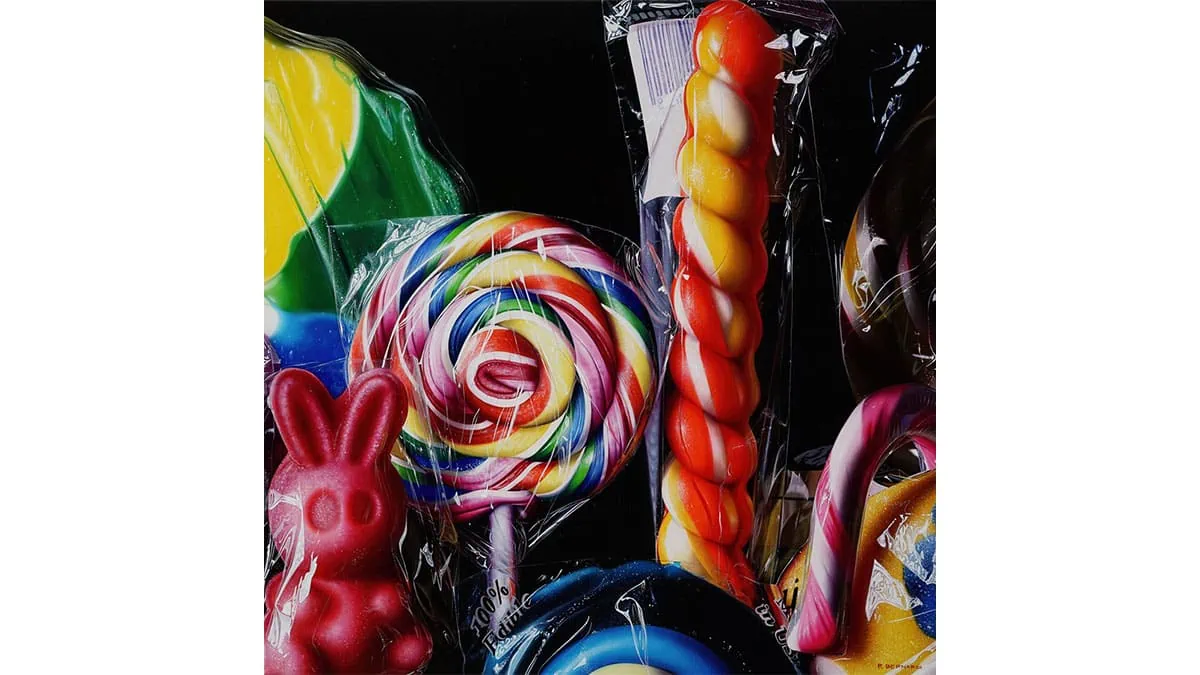
It looks delicious, isn’t it?
Who can say that this hyper realistic oil painting was created by a human?
This is an amazing work by Roberto Bernardi that displays colorful lollipops.
Whenever you glance at candy’s texture, it’s exactly the same as seen in the painting.
Roberto captured the correct texture in art without compromising on the designs or the wrappings that look flawless.
4. Girl with a Pearl Earring in Plastic by Tjalf Sparnaay
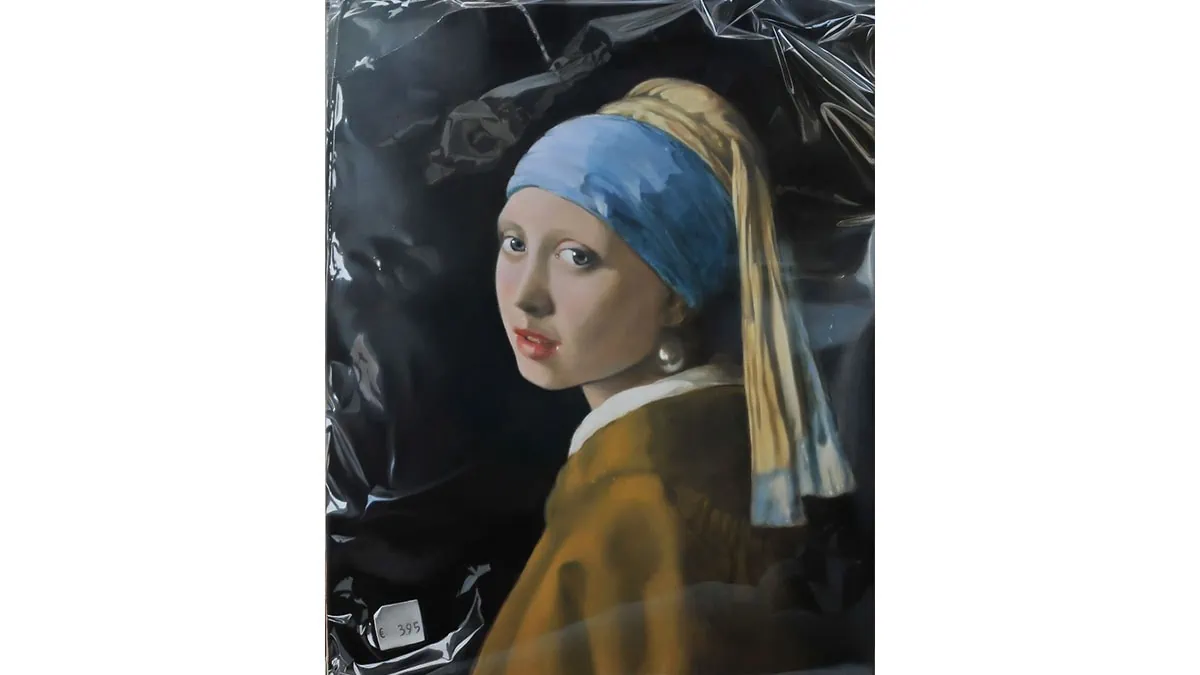
Tjalf Sparnaay or Johannes Vermeer?
Don’t worry, I’ve mentioned the correct name, which is Tjalf Sparnaay.
The Girl with a Pearl Earring was created by Johannes Vermeer. But many artists experimented with its composition.
Tjalf was among the finest artists who produced this classic portrait in hyperrealism.
He hit the heights of extraordinariness by simply applying the most common object of our lives—plastic.
Why did Tjalf Sparnaay create Girl with a Pearl Earring in Plastic?
As I mentioned, he wanted to rediscover the essence of beauty by adding a common piece.
5. Wild Man by Ron Mueck (2005)

Another sculpture by Ron Mueck is “Wild Man.”
This massive portrait of a man is sitting on a stool.
You can easily make out how large it must be with the audience surrounding it in the above image.
It has a light skin tone with a weird expression and sitting position.
Mueck planned to create a figure who appeared cramped.
After he witnessed the colossal stone sculpture Appennino (1579-1580) by Renaissance artist Giambologna, his ideas made their way into the form of “Wild Man.”
6. Mona Lisa by Leng Jun (2004)

No, not the original Mona Lisa but rather a hyperrealism replica art.
Leng Jun painted the art in the same posture and style because it was so famous.
He explained that it was about giving an artistic touch to a modern person, representing past art.
Later, Leng Jun created a series of these paintings, which gained popularity among the audience.
Don’t you feel like owning a piece of hyperrealism art for yourself too?
Art that is as real as if you are standing in front of the mirror.
With our handmade paintings, you can get studio-quality work.
Just send us your photos and watch how flawlessly we convert them into beautiful hyperrealistic art.
Symbolism of Colors in Hyperrealism
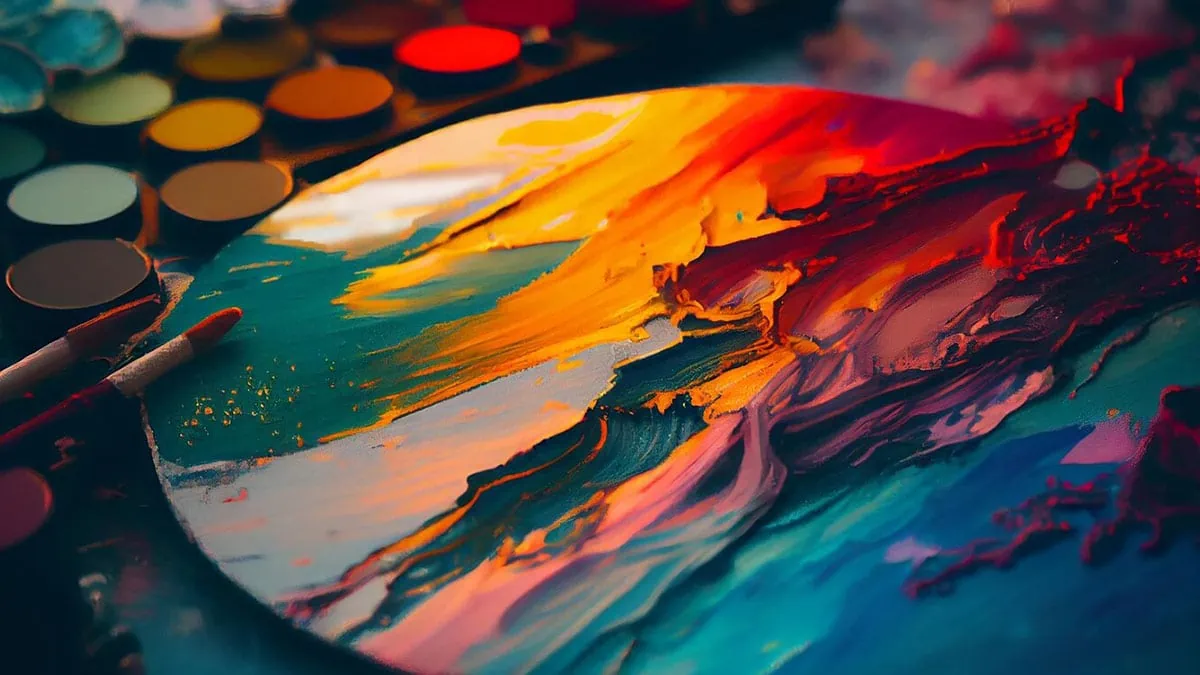
You know the secret why these arts are the most realistic paintings in the world?
The colors play a significant role in forming such hyperrealistic art.
Each shade represents an emotion or feeling, which helps the art gain a hyper realistic image. Curious to know what type of emotion?
| Color | Feelings |
| White | Purity, Light, Hope, Simplicity, or Desire |
| Black | Power, Bad, Death, Sophisticated, or Secrets |
| Red | Romance, Passion, Risk, or Excitement |
| Blue | Peace, Belief, Integrity, or Calmness |
| Yellow | Rejoice, Energy, Caution, or Wisdom |
| Green | Life, Money, Novelty, or Tranquility |
| Purple | Luxury, Imperial, Vision, or Magic |
| Pink | Love, Sensitivity, Sincerity, or Beauty |
| Gray | Maturity, Security, Stability, or Strength |
To Conclude
Now you know what hyperrealism is and the most realistic paintings across the world.
But there is one thing that is still unsaid.
Answer this: Who was the first person to introduce hyperrealism?
Isy Brachot was the father of hyperrealism.
In 1973, an exhibition and catalog named Hyperréalisme by Isy Brachot brought the term hyperrealism into existence.
Isy Brachot created the title to show photorealistic images by Chuck Close or Charles Bell.
This way, hyperrealism art was commenced.
Whenever I explain or share any story related to art history, it makes me feel like there are millions of stories that contributed to starting an art movement.
It always surprises me!
Writer Says Hi!
How was the blog about “Hyperrealism Art?”
Unique, different, and informative?
I have gathered all the information in one blog, which will help you understand hyperrealism in the simplest way.
Share your thoughts, suggestions, or queries via comments, where I can go through your valuable feedback and reply to you.
I’ll be glad to hear from you.
Till then, keep reading and exploring!
FAQs
The characteristics of creating hyperrealism in art focus mainly on the visual, cultural, and social details of daily life.
There are many artists who are well-known hyperrealists, among which Leng Lun stands out.
Isy Brachot is the father of hyperrealism and the one who brought this art movement into existence.
Hyperrealism is an art genre resembling high-resolution photographs through painting and sculpture.
Elements of hyperrealism include emotion and political, social, or cultural themes that depict reality.
The technique used in hyperrealism art is the grid method.



